This article is brought to you by HeritagePA and is based on my travel experiences in the Oil Heritage Region.
Pennsylvania has been home to many world-changing events over the years, from the Declaration of Independence to the discovery of the polio vaccine, to the creation of the Big Mac. However, you could argue that few, if any, of these had as large an impact as what occurred in northwestern Pennsylvania in late August of 1859.
Oil was known to exist in northwestern Pennsylvania for hundreds of years. Over that time, Native Americans had been collecting oil from seeps in the ground along Oil Creek and passed that knowledge onto settlers to the area. Oil had even been discovered in the drilling of saltwater wells. However, prior to the summer of 1859, no one had actually drilled with the purpose of finding oil. That is until Colonel Edwin Drake struck oil on a small parcel of land just south of Titusville, Pennsylvania.
Within days, oil prospectors lined the banks of Oil Creek searching for oil and creating the world’s first oil boom. This oil boom drew tens of thousands of people to the area around Drake’s Well, made many millionaires (and even more destitute), and changed both the world and northwestern Pennsylvania forever.
Today, the Oil Heritage Region works to preserve this world-changing area and offers a chance to visitors to explore the region’s small towns, museums, and outdoor beauty, each of which offers a unique look at the region’s history.

No matter how you plan to explore the history of the Oil Heritage Region, the place to start your journey is the Drake Well Museum. This museum tells the story of oil from Drake through the present day, focusing on how the industry changed during the first decades of the oil boom and how it is affecting the world today.
The museum’s grounds feature a recreation of the world’s first oil well on the exact spot where it once sat, a variety of antique oil drilling equipment, and beautiful paths that connect to the nearby Oil Creek State Park.
The Oil Heritage Region’s Small Towns

While the oil industry touched every corner of the region, there are four small towns where you can learn about how the industry affected the region and how its legacy continues to shape the communities: Titusville, Oil City, Franklin, and Emlenton. Walking tours are available for each of these communities and offer insight into the history, heritage, and architecture of many of the impressive buildings in these towns.
Titusville is the northernmost community in the Oil Heritage Region and is known as “The Birthplace of the Oil Industry.”
Drake’s discovery transformed Titusville from a small community of a few hundred to a bustling city of nearly 10,000. It also completely transformed the downtown with many of the buildings dating from the late 19th and early 20th centuries.
Unfortunately, many important buildings are no longer standing, including the world’s first oil exchange and a boarding house that was briefly the home of John Wilkes Booth. However, the community’s walking tour brochure covers many of these lost buildings as well as those that are still standing.

One important building that is still standing in Titusville is the Tarbell House. This was the home of Ida Tarbell, an investigative journalist who grew up in the oil industry. Her work on Standard Oil in the early 1900s prompted Congress to take action to break up the company’s monopoly. Today, her home is open for tours by appointment.
Further south, at the confluence of Oil Creek and the Allegheny River, is Oil City. This location made Oil City central to the oil economy of the region, which is highlighted by the city being home to the headquarters of Quaker State, Pennzoil, and Wolf’s Head.

Oil City was also home to a large contingent of Standard Oil, and the National Transit Building that was built by Standard Oil in the 1890s still stands. At one point in recent years, the derelict building was threatened with destruction to make way for a pharmacy. However, the building was bought and transferred to the Oil City Civic Center.
The organization began restoring the building, a process that is still ongoing.
Today, it is home to mostly non-profits and artists, but visitors can still see the many decorative touches that made this building quite impressive in its heyday. The Oil City Civic Center commissioned an impressive oil mural in the building’s lobby that shouldn’t be missed. It showcases the history of the oil region and of the building’s original tenant, Standard Oil.
Maybe one day some of the empty space will be filled in by the building’s current tenants who are improving daily life for the residents of the Oil Heritage Region.
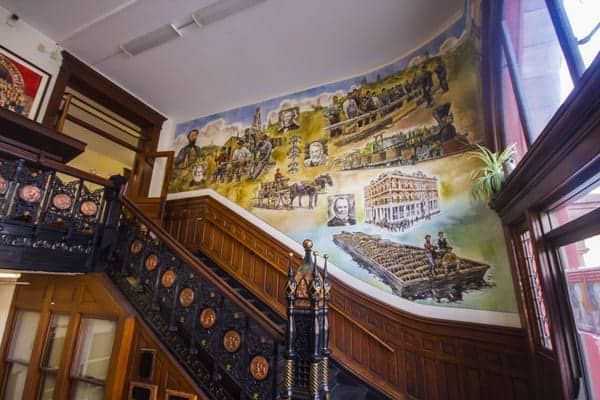
Franklin is the county seat of Venango County, and thus played an important role in the county’s oil industry. The wide streets of downtown are lined with beautiful brick buildings, many of which contain shops, restaurants, and other commercial companies.
The most impressive building in Franklin is Saint John’s Church. From the outside, this church may look like many other churches that dot the many communities around the state. However, inside, the church is home to a full set of Tiffany stained-glass windows, one of only seven churches in the world that can make this claim.

These windows are a sight to behold and were all donated to the church by families that had gained their wealth in the oil fields around the region. The church recently spent a significant amount of time and money to have the windows properly restored, ensuring that their beauty lives on for generations to come.
Franklin is also home to Miller Park.
Miller Park sits high atop the hill west of downtown and was once a semi-private community filled with citizens made wealthy in the oil industry. While the fountains, brick-lined streets, and gardens are mostly gone, a walk through the community offers an impressive look at what life was once like for the wealthiest of the region’s citizens.
This area is also home to the beautiful Miller Park Bed and Breakfast.
Built in 1908 as a wedding present to Henry and Fay Grant with money gained in the oil fields, the home was incredibly ornate and was the first in the community to feature electric Christmas lights. After falling into serious disrepair, the home was purchased by Dan Weiland, who has been lovingly restoring the home into one of the most beautiful bed and breakfasts in Pennsylvania.

The fourth community of the Oil Heritage Region, Emlenton, is also the smallest. However, don’t let size fool you. At one point in time, Emlenton was home to more millionaires per capita than any other place in the world. It was also the birthplace of one of America’s most well-known oil companies, Quaker State.
Today, a walk through downtown offers visitors a chance to learn more about the community’s former residents, homes, and architecture. Nearly 400 structures in the downtown area were added to the National Register of Historic Places, which ensures that the area will continue to provide a historic look at this beautiful town.
The Oil Heritage Region’s Museums

In addition to the previously mentioned Drake Well Museum, the Oil Heritage Region is home to several other museums that allow history enthusiasts to learn more about the history of the oil industry.
The Venango Museum of Art, Science and Industry digs into the history of oil in the region and tries to answer the questions of whether its discovery was good or bad for mankind. Their collection gives visitors the opportunity to not only learn about the oil industry in the region but also to analyze the effect that it’s had on nearly every aspect of modern life.

Another place worth visiting is Pithole. At one time, this was an oil boomtown and home to more than 10,000 people. However, when the oil dried up, the community did as well.
Now an empty field, visitors can learn more about Pithole at the Pithole Visitor Center. This small museum features a film about the town, as well as many items related to this historic village. Most importantly, though, it features a large and accurate model of Pithole that allows visitors to fully grasp the size of the boomtown and how fully nature has reclaimed the land.
Of course, these aren’t the only museums worth visiting.
The Venango County Historical Society Museum in Franklin showcases the history of the county in a home built from oil money. The Pumping Jack Museum in Emlenton tells the story of how oil affected this small community and has several pieces of memorabilia from Quaker State. **Note this museum appears to be closed so please confirm before visiting. Finally, the Coal Oil Johnny House just outside of Oil City offers those looking to learn about oil heritage a chance to see what life was like for those on the oil fields and to learn the story of one of the region’s most interesting characters.
The Oil Heritage Region’s Nature
Despite being the birthplace of one of the world’s largest industries, the Oil Heritage Region has remarkably recovered from much of the environmental damage that occurred in the valley and is home to immense natural beauty. Of course, just because you are spending time outdoors, that doesn’t mean that you can’t learn about the region’s oil history.
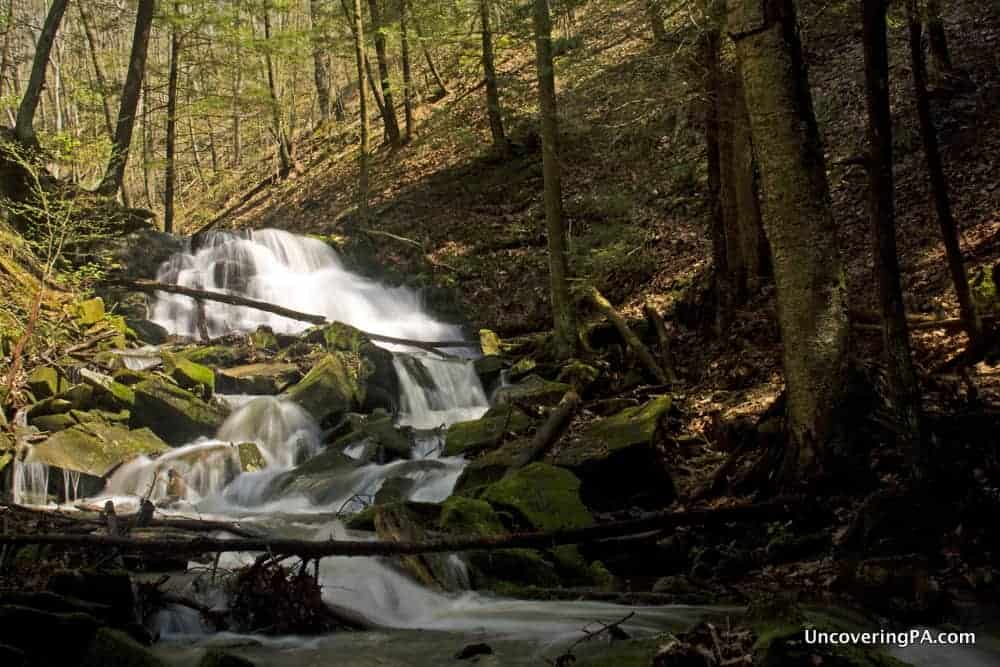
Oil Creek State Park is one of the most beautiful state parks in Pennsylvania and offers opportunities for hiking, biking, fishing, and kayaking. Along the way, you’re as likely to find antique oil equipment and modern drilling equipment as you are to find waterfalls and overlooks.
One example is the Wolf Rig rusting away in Wildcat Hollow. This mobile oil driller is located directly along one of the trails and was left as drillers moved on to other parts of the region.
Today, it, along with many other pieces of equipment large and small, awaits visitors hiking the trails of Oil Creek State Park. Oil Creek State Park also features several interpretive areas where visitors can walk through the park’s beautiful scenery while learning about places like Petroleum Centre and Blood Farm.

Modern oil drilling still occurs in and around the park, and it’s not uncommon to come across this modern equipment will visiting the park.
Just outside the park boundary, McClintock Well #1 still pumps oil on a yearly basis, making it the oldest continually operating oil well in the world. You can buy oil pumped from this well at the Drake Well Museum.

Passing through the park, just as it did 150 years ago, is the Oil Creek and Titusville Railroad.
This excursion train takes visitors roundtrip from Titusville to the southern edge of the park and offers narration and beautiful views all along Oil Creek. Riders can opt for historic cars with narration or the open-air car at the back of the train. Either way, this enjoyable ride gives visitors a chance to see the valley that changed the world from a unique angle.

Further south, Freedom Falls is an impressive waterfall in the southern reaches of the Oil Heritage Region.
Just downstream of this beautiful waterfall is an iron furnace that dates back to 1832. While it stopped producing iron in 1854, five years before Drake’s discovery, a visit to this hidden furnace allows visitors to better understand the region’s industrial past that led up to the oil boom of the 1860s.
Just down the road from Rockland Furnace, visitors can reach Rockland Tunnel, a mile-long tunnel along the Allegheny River Trail.

This biking trail, which runs nearly all the way from Titusville to Emlenton, allows visitors to enjoy the pristine scenery of the area. Bikers can ride along the paths the trains once used to transport oil from the fields in the area to customers around the world. Eventually, this will be part of the Erie to Pittsburgh bike trail connecting these two cities, with onward travel possible to Washington, D.C.
Outdoor enthusiasts will also want to take the time to check out McClintock Number 1, the oldest continually-producing oil well in the world.
While it only pumps oil a few days each year, there has been oil produced here since August 1861, just two years after Drake drilled the world’s first oil well. A related site sits in Emlenton’s Mineral Springs Park. Here Crawford Number 3, drilled by the founders of Quaker State Oil, has been producing oil since 1867.

Without a doubt, the Oil Heritage Region offers a glimpse into some of the most important historical events to ever take place in Pennsylvania.
Even better, the continual production of oil in the region and the revitalization of these communities is proving that the region’s heritage is still alive and well in the 21st century. Whether you love small towns, museums, or the outdoors, there is something for any history lover in Pennsylvania’s Oil Heritage Region.
This article is brought to you by HeritagePA and is based on my travel experiences in the Oil Heritage Region.

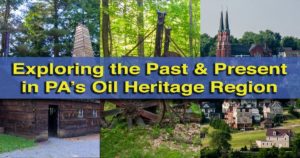
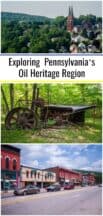

 "
"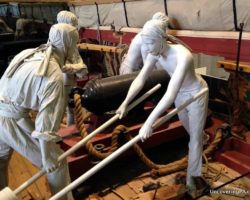






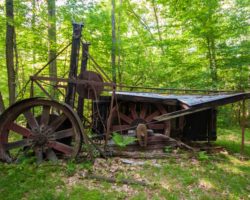

Awesome!!!!!!!!